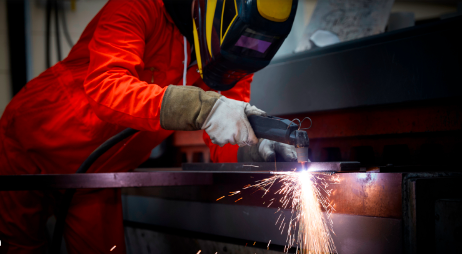
Safety Tips Every Plasma Cutter Should Know
Working with a plasma cutter is both rewarding and effective for various metal work tasks. However, it also comes with potential risks. Understanding and following essential safety practices ensures a productive and accident-free environment. Below, we explore some practical safety tips that every plasma cutter operator should know.
Stay Informed About Gas Use and Safety
Plasma cutting often involves gases, such as argon gas or a mixture of others. It is used for shielding during the cutting process. The use means you need to be particularly cautious about handling gas cylinders and understanding the properties of the gas you are using.
- Store cylinders upright: Gas cylinders, such as those containing argon gas, should always be stored in an upright position. Improper storage can lead to leaks or accidents.
- Check for leaks: Regularly inspect hoses and connections for gas leaks to prevent exposure or fire hazards.
- Ventilate the area: When using gases like argon, which can displace oxygen, proper ventilation is critical to avoid the risk of asphyxiation.
Proper Training and Maintenance
Proper training is essential for safely operating a plasma cutter. Whether you are new to plasma cutting or an experienced operator, continuous education and hands-on training can make all the difference. Always be up-to-date with the latest operational and safety techniques.
Clean and maintain the plasma cutter, including the torch tip, regularly to ensure optimal performance and safety. Ignoring maintenance can result in malfunctions that lead to accidents.
Wear Proper Personal Protective Equipment (PPE)
Plasma cutting involves the use of high heat and intense light, making the right protective equipment essential to prevent burns, radiation exposure, and injury from flying debris. When operating a plasma cutter, several protective items are crucial.
A welding helmet is necessary to shield the face and eyes from sparks and harmful UV radiation. Fire-resistant clothing is important as plasma cutting produces sparks that can ignite regular fabrics. Heat-resistant welding gloves protect the hands from high temperatures during the cutting process.
Hearing protection is also advised, as plasma cutting can generate loud noise levels that may damage hearing over time. Lastly, wearing a respirator or mask is essential to safeguard against the harmful fumes produced, especially when cutting specific materials.
Read also: Class Games Unblocked: The Ultimate Guide
Electrical Safety
Plasma cutters operate by utilising high voltage to ionise the gas and generate a cutting arc, posing significant risks if proper electrical safety precautions are not observed. It is essential to regularly inspect cables, as damaged ones can lead to electric shocks.
Additionally, avoid touching any exposed parts of the torch when it is powered on, even if it is not actively cutting. Always ensure the power is switched off when the plasma cutter is not in use or during maintenance procedures to prevent accidents.
Use the Right Settings for the Job
Understanding how to configure your plasma cutter for different tasks is critical to safety and efficiency. Using the wrong settings can reduce the quality of your work, put unnecessary strain on the equipment, and increase the risk of malfunction.
- Adjust the amperage: Ensure the amperage is set according to the material thickness and type.
- Control gas pressure: If you are using gases, such as argon, make sure the pressure settings match the job’s specific requirements.
- Maintain correct distance: Keep the cutting tip at the proper distance from the material to prevent excessive wear or overheating of the torch.
Prevent Overheating
Plasma cutters work at high temperatures, and overheating can be severe if not monitored closely. When using the plasma cutter for long periods, make sure to allow time for the equipment to cool down. This helps prevent damage to both the machine and your material.
Many plasma cutters come with thermal overload protection. However, you should be aware of any unusual noises, smells, or performance issues that could indicate overheating.
Safety is paramount when using gases like argon gas. A few critical practices can distinguish between a smooth operation and a serious accident. Taking the time to understand and implement these safety measures ensures your well-being and the longevity and efficiency of your plasma cutter. Stay safe and productive!


